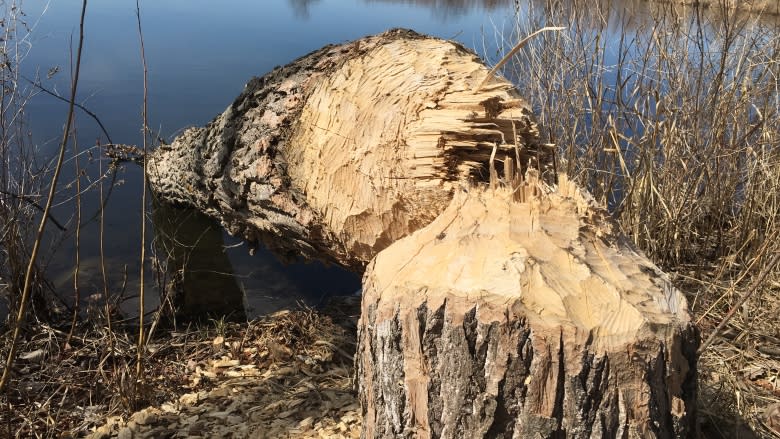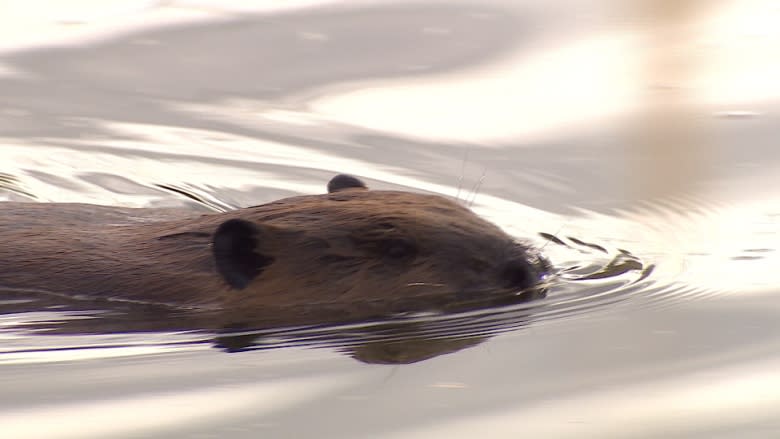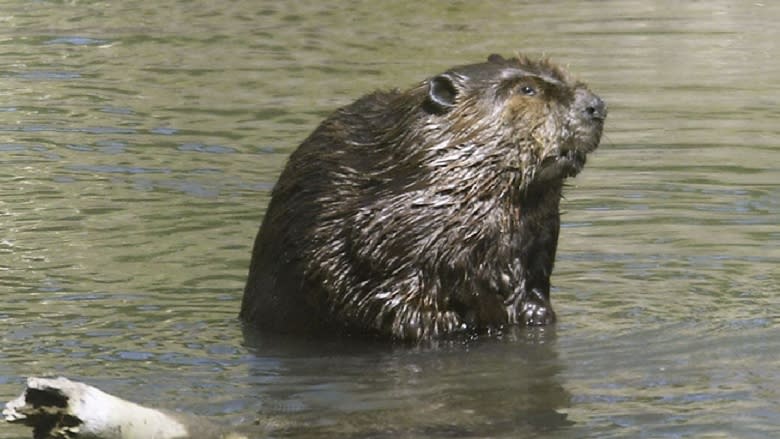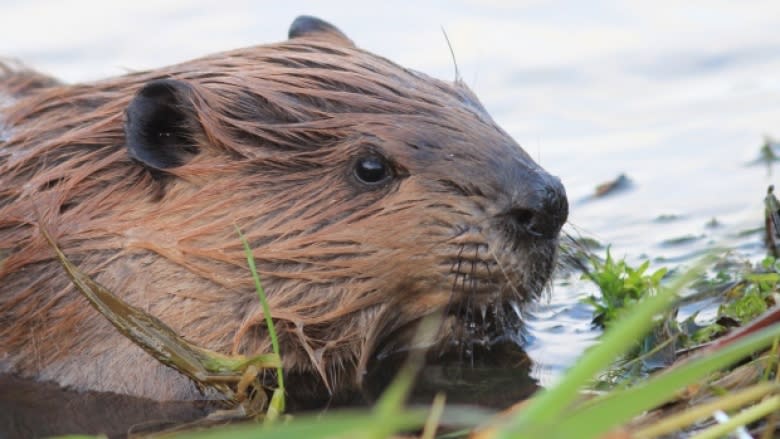11 things you always wanted to know about beavers on P.E.I.
Beavers have been in the news on P.E.I. recently — some have been busy builders in Bedeque and another was a visible victim of illness in the P.E.I. National Park.
"Beavers are almost ubiquitous, and virtually every watershed in the province would have some presence of beavers," says Garry Gregory, a P.E.I. wildlife biologist with Forests, Fish and Wildlife who agreed to share his extensive knowledge of beavers.
The province does not have a formal monitoring program, so the exact number of beavers is unknown, Gregory said, but P.E.I.'s is a "healthy population" with a few thousand beavers.
1. They're big
An adult beaver is bigger than you might think, averaging a weight of 23 kilograms or 50 pounds.
"We've had some approaching 60 pounds," said Gregory, noting beavers are the second-largest rodent in the world after the capybara.
Their tails can be a foot long and quite thick and heavy, with a scaly, leathery texture.
"The thickness of the tail is actually a rough indicator of the quality of the habitat because they store a lot of fat and a lot of energy reserves in the tail," he said.
2. Foot paddlers
"They primarily use their feet for swimming," Gregory said. Beavers' two hind feet are partially webbed, he explained.
They use their tails to balance their weight when they want to sit up on their haunches to chew on trees, he said.
3. They're herbivorous
Beavers have a favourite food — the bark and twigs of poplar and willow trees.
In summer they also munch on all matter of pond vegetation including marsh lilies. But no meat!
4. Hot spots for beavers
Beavers favour watersheds with a flatter profile, less hilly terrain and slower-flowing water.
The Morell and Midgell area in eastern P.E.I. as well as wetlands west of Summerside are both popular spots where beavers are plentiful, Gregory said.
5. Breed once a year
Beavers are less plentiful than their prolific rodent cousins the muskrat, for a couple of reasons.
Beavers mate only once a year. Their litter will nurse for six to eight weeks. The young typically do not breed until they are in their third year, and will then leave the family colony and strike off on their own.
6. They're monogamous
Beavers take one mate and keep them for life or until death do they part, Gregory said.
That could be a while — beavers can live up to 10 years or more.
7. Those controversial dams
Beavers are more visible than say, muskrats, because they are so busy cutting down trees and building dams in preparation for over-wintering.
"If a beaver is present in a wetland, it's not hard to tell," Gregory said.
Beavers can't help their natural instinct to build dams to protect themselves, Gregory said. They also build dams in order to flood land.
"A beaver is a bit clumsy on land, but if it can swim to its food, then it's much more readily available to him," Gregory explained. "So he'll flood a large area to create a large surface area of pond."
Not only do beavers want their ponds to be wide, they also want them deep, Gregory said. Since they do not hibernate, they need water to be deep enough that the water doesn't freeze all the way to the bottom.
Not all beavers build dams, however — some make dens in riverbanks. Others living in large freshwater marshes don't need to build dams because the water is already wide and deep.
While dams and flooding can be a nuisance, the positive part of the beaver's natural industry is that dams create a lot of wetland habitat for species such as songbirds and bats.
"So they're incredibly important landscape architects," said Gregory. "Sometimes it's a bit overlooked, their importance."
8. Slapping a warning
Beavers slap their tails on the water's surface to warn other colony members of danger, Gregory said.
Beavers who hear a warning slap will immediately dive deep and possibly retreat to their lodge. They can hold their breath underwater for at least four or five minutes, Gregory said.
9. Few predators
"There are very few predators of beavers on P.E.I. — the natural predator of a beaver is a wolf," said Gregory. P.E.I. does not have wolves, so their cousins the coyote are their main predator, but Gregory said coyotes fail to limit beaver populations.
Beavers do become vulnerable when pond ice freezes all the way to the bottom in winter and they are forced to spend time on the ice surface where they can't make a fast getaway from say, a great horned owl or other bird of prey.
So beaver populations are "self-limiting," Gregory said, mainly depending on the amount of food available. Too many beavers in one area will mean some will succumb to disease or starvation.
10. Except for humans
Humans would be the largest cause of death for beavers, Gregory said. The last few years, Island trappers have brought in an average of about 450 beavers pelts per season, but that number has been as high as 800 to 900, he said.
The pelts are exported to fur auction houses to international buyers. Canadian beaver pelts are favoured because our colder weather creates thicker, more luxurious fur.
11. Ever-growing front teeth
Like all rodents, beavers have ever-growing front teeth or incisors. Thus, their "innate requirement to chew" constantly, Gregory said.
"If they didn't chew their teeth would get too long and they'd puncture their lip," he said, noting those teeth are razor-sharp, as are their claws.
Beavers are not aggressive but like any wild animal, will defend themselves if threatened — however, it is rare to be able to get close to beavers as they are mostly nocturnal and quite shy, Gregory said.
If you see one, experts say admire them from afar. If a beaver is creating a nuisance on your property, contact Fish and Wildlife and you may be issued a permit to be allowed to remove the beaver or dam. A "couple dozen" such permits are issued annually by the province, Gregory said.
More P.E.I. news





